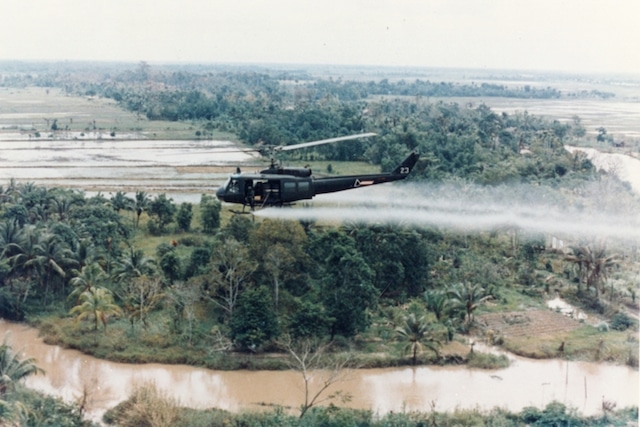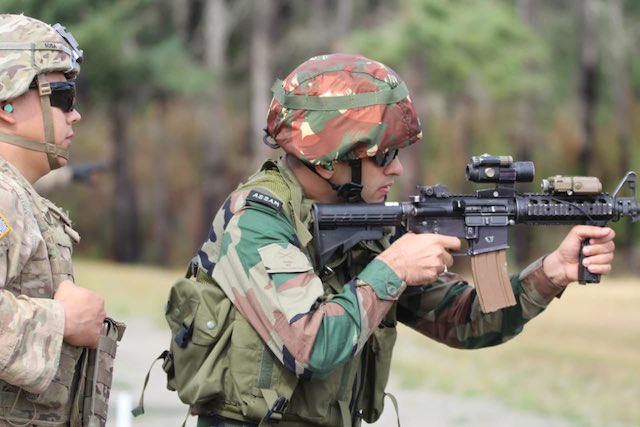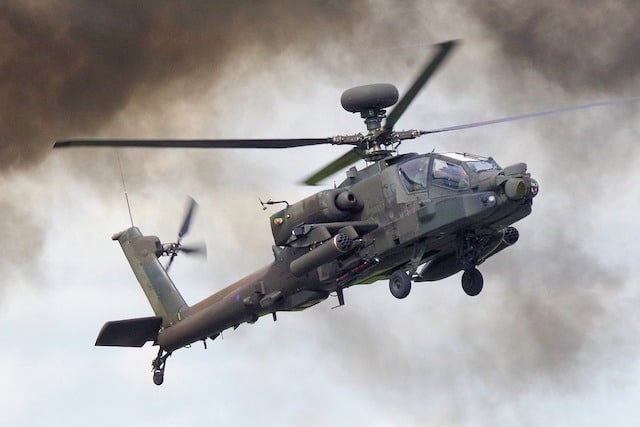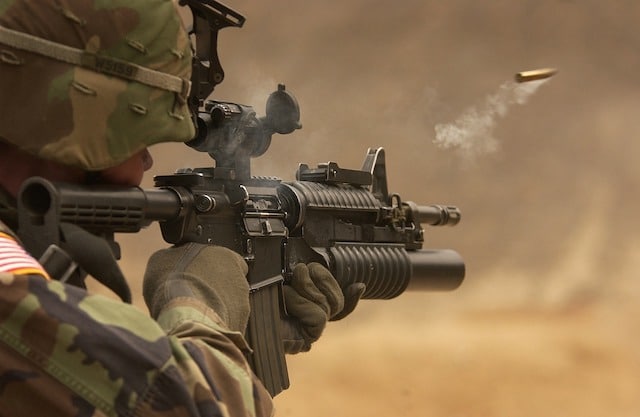In 2021, the US Air Force announced that in order to drive recruitment it would resort to propping up veterans as social media influencers. It’s questionable how effective that will be, even more so after TopTenz helps spread the word about why the US Armed Forces aren’t something people should want to join if they know what’s good for them.
We’re not just going to forego discussing the risks of death or injury in combat. We won’t even be discussing the ardours of basic training or the time away from home. Those are all more or less intuitive. We’ll be talking about generally unreported problems. Some feel as if they are the result of dubious supervision, others are inherent in the system. Bureaucracy and human nature being what they are, a significant number seem like they will never be addressed. Not that anyone should be ashamed of enlisting, but they should be honest when talking to anyone considering it.
10. Toxic Exposure

Many soldiers can pretty much expect to be exposed to extremely harmful chemicals in the line of duty. For optimal treatment, it must be known exactly what poison the troops were exposed to. Unfortunately, the military has repeatedly shown an unwillingness to cooperate with medical services. In many instances it’s because giving veterans disability benefits would mean releasing classified information on military operations. The most famous instance of this is veterans attempting to claim compensation for being exposed to the birth defect-causing herbicide Agent Orange during the Vietnam War. Much less well-known was the use of a carcinogenic defoliant during the same war known as Blue Water, which was estimated to have inflicted serious harm to the health of 165,000 veterans.
More recently, in 2019 a review by the Department of Defense of drinking water used by military installations and bases found a total of 175 of them were heavily contaminated with carcinogens. Specifically, it was fluorinated chemicals known as PFAS that are used as a fire suppressant. A 2016 EPA advisory said that no more than 70 parts per trillion (ppt) were safe for consumption, but many personnel at these bases had been provided water with more than 100,000 ppt.
This is not to say that no one is working to correct this. In January 2018 a bill was signed into law which declassified those operations so that veterans could receive benefits for harm inflicted by Agent Orange, and in 2019 for exposure to Blue Water. Additionally, nonprofit groups such as Wounded Warrior Project and Veteran Warriors Inc. have announced they will be collaborating for toxicity treatment advocacy. However, to date it has proved to be a slow process to get compensation, and even with benefits the damage has still been done.
9. Post-Service Underemployment

Commercials for enlisting in the military certainly play up the supposed career opportunities after service time is over. It’s certainly true that there are a large number of opportunities to develop skills while still in uniform. It’s also encouraging to hear that the unemployment rate for veterans was only 3% as of March 7, 2020. The thing is that underemployment, which is to say employment that pays less than the work they’ve been trained to do, is 37% worse among veterans than it is for civilians.
There are two main reasons for this. First, there are licenses for civilian work that veterans often will not get while in service. For another, since tasks are assigned by superiors instead of chosen by the enlisted, surveys showed that 55% of members of the military were trained in fields they did not want to pursue in civilian life. Some, such as Navy technician Mike Lynch, run into the problem familiar to many contemporary graduates trying to enter the work force where employers tell them they somehow need to have already had years of experience in the field. Many employers are also reluctant to hire veterans on the basis of stereotypes surrounding post-traumatic stress disorder and other afflictions. Between sorting state-by-state issues with certifications and the time it takes to undo stereotypes in the public consciousness, this will likely be a problem for the foreseeable future.
8. Stop-Losses

Someone may enlist thinking the time for their tour of duty is determined in advance, but the Stop-Loss Policy allows for the military to extend a tour as long as deemed necessary, a practice which dates back to the US Civil War. Between the start of the War in Iraq and 2008, 58,300 personnel learned all about Stop-Loss in the worst way. About all they had for consolation was that they received a $500 monthly bonus.
In 2011 Defense Secretary Robert Gates announced that the Stop-Loss Policy would be put to an end, by which time 13,000 troops were still involuntarily serving. In early 2020, between the assassination of General Qasem Solemani and the Covid-19 pandemic, the Pentagon admitted that it was considering reintroducing it. With how crazy the world has gotten recently, it’s potential return still looms large over the military today.
7. Crumbling Navy

It’s no secret among the roughly 300,000 members of the US Navy that the branch is having severe problems. For example, there are a number of shipbuilding quotas that aren’t being met because the Freedom Class Littoral combat ship is proving to be a highly defective model, similar to the Air Force’s notorious F-35. At the same time, ships are having difficulty with maintenance, and with the delays that is causing as of 2018 the Navy began extended tours of duty.
In December 2020 there were reports that morale was so low that officers were worried there would be a significant uptake in suicides. Discipline is also reportedly on the decline to an extreme degree. Since 2017 there have been reports of naval sabotage committed by its own personnel, the most prominent being the suspicion that the massive burning of the USS Bonhomme Richard, which lasted four days, was deliberately caused by a US sailor.
6. Lead Exposure

Even if only about 10% of troops see combat, going through target practice is much more universal. While TopTenz is not about to discourage gun ownership or target practice, people should be aware that a collection of 36 studies of regular users of indoor gun ranges reviewed by the journal Environmental Health all found lead levels in blood roughly double the normal range, to the point where it would be unsafe for pregnant women.
So how many confirmed lead poisoning cases have there been for soldiers? Not many yet. In 2019 Mount Sinai hospital tested 38 soldiers for it and found 12 had harmful levels. However, the New York Times pointed out that only roughly 1,200 out of 3,000,000 service personnel got tested for it annually, and that many soldiers have officially unexplained symptoms of lead poisoning, indicating wider exposure than initially believed. Additionally, beyond firing ranges, many personnel stationed in countries such as Afghanistan and Iraq are exposed to additional lead because lead is still used in gasoline in some regions.
Lead poisoning also has been a problem for some relatives of troops for military reasons. In August 2018, 31 children housed at Fort Benning were found to have received harmful levels of lead exposure. It turned out this was not new: Between 2011 and 2016, 1,100 children in military housing were found to have to have lead levels in their blood above safe levels. It’s a matter of older homes that still had coats of lead paint on them from before it was banned in 1978.
5. Rising Crashes

In December 2020 a congressional commission released a report on military aircraft crashes. It had been conducted over the course of eighteen months and involved 80 different sites and 200 units. According to the report, every unit had a significant number of personnel who were worried that their aircraft would be the next to crash. The problems include supply chain issues that mean parts of aircraft such as engine filters need to be used long after they should have been replaced and pilots who haven’t had the necessary levels of experience being tasked with training the fresh blood. Additionally, as in the Navy, extended tours of duty are causing fatigue and understandable emotional distractions for pilots.
Consequently, between 2013 and 2020, 186 aircraft were lost to crashes without being fired upon. 224 pilots and crew members were killed while many more were wounded. The commission estimated that the situation was going to get worse before it would get better,
4. Veteran’s Affairs Problems

No one will say that the Department of Veteran’s Affairs doesn’t have a vital and extremely taxing job. Among other benefits that need to be distributed, there are millions of veterans that have their healthcare managed through them. Yet it has a reputation for inefficiency that some would argue is well-founded, such as City Journal, which shared a Veteran’s Affairs report that as of September 2014, 307,000 veterans had died while still waiting for their applications for medical care to be processed.
Mismanagement of funding has also been a problem. During the Covid-19 pandemic, shell companies that had in some cases literally been created the day before were given millions in funding. Additional Veterans hospitals have become so notorious for being less than accommodating for female veterans, such as not offering gynecological services at all, that a significant number of them don’t even apply for aid at them.
As we’ll soon see, that’s necessarily not the worst problem many female veterans face.
3. Covering for Crimes

On April 5, 2010, Julian Assange released the infamous video “Collateral Murder,” which had been leaked by Chelsea Manning, that showed, in July 2007, US Apache helicopter pilots killing several Iraqi civilians, reporters for Reuters, and emergency medical personnel that responded to the initial shooting. Such is the military’s willingness to cover up crimes of that nature that the only individuals known to have suffered in relation to the event were Assange and Manning. Army specialist Ethan McCord who was early to the scene of the crime said things like Collateral Murder happen “almost daily” and that when he attempted to go through official channels to report the crime, the response was “get the sand out of your vagina.”
Arguably even more disturbing was the assault and murder of 13-year-old Abeer Al-Janani in 2006 by four US service members in Iraq. The crime was initially covered up by the military, and it was only the whistleblowing of Justin Watt that meant the assailants saw any justice. Rather than being treated as a hero, Watt said that even years later he needed to live under an alias because his actions had resulted in him receiving many serious death threats. Imagine serving not only knowing there’s the threat of the enemy, but also knowing that your fellow service members may very likely be willing to commit such crimes with establishment help. Now imagine knowing that the harsh punishments could hang over your head if you didn’t facilitate rape and murder.
2. Remote PTSD

So maybe a prospective recruit will see all this and think that they could get a relatively safe job by being a remote drone operator. Even if someone is assigned to fly an armed drone instead of a surveillance drone, then they’re operating at enough of a distance from the consequences of their actions that it won’t cause them psychological harm. Serving in the military while avoiding deployment seems like guaranteed security.
Unfortunately for them, that guarantee is not there. Studies are finding that even people who function so removed from the violence are suffering from post-traumatic stress disorder. This is not limited to drone pilots who fire on people. Surveillance drone pilots also see many scenes of violence that haunt them. NPR reported in 2017 that there was an Air Force survey where 20% of respondents said they’d witnessed a sexual assault in the past year while some had seen as many as 100 physical assaults. To be sure, at roughly 4.3% drone pilots suffer from Post Traumatic Stress Disorder at a lower rate than the deployed personnel (10%-18%), but the risk is still there.
1. Risk of Sexual Assault
In recent years, films such as Captain Marvel have been used in an attempt to drive up female recruits to the military. For many women this has been a horrifying mistake. In 2018 alone, 13,000 female members of the military reported sexual assault of the 230,000 that were enlisted at the time. That might not sound like many, but bear in mind that the Department of Defense has stated it’s a massively underreported problem. This is believed to be a significant contributing factor to why female enlisted are about 28% more likely to end their service early than their male counterparts. One such victim was National Guard Sergeant Morgan Robinson, who filed a report when she was assaulted in 2016 by a superior while in Kuwait. Then, when attacked by multiple assailants when deployed to Afghanistan in 2018, she took her life that same year. According to her mother, the military just blew her claims off.
This risk is by no means limited to female enlisted. More than 100,000 male soldiers have reported that they suffered from it in recent years. Estimates vary on how many have been unreported, but some put it as high as 22.5% of male enlisted experienced it by the time they left the military.
In conclusion, if you are a veteran who has experienced anything described in this list and someone tells you they’re considering enlisting, please be honest with them about some of the lesser known risks.
Dustin Koski co-wrote the post-apocalyptic supernatural comedy Return of the Living with Jonathan “Bogleech” Wojcik.